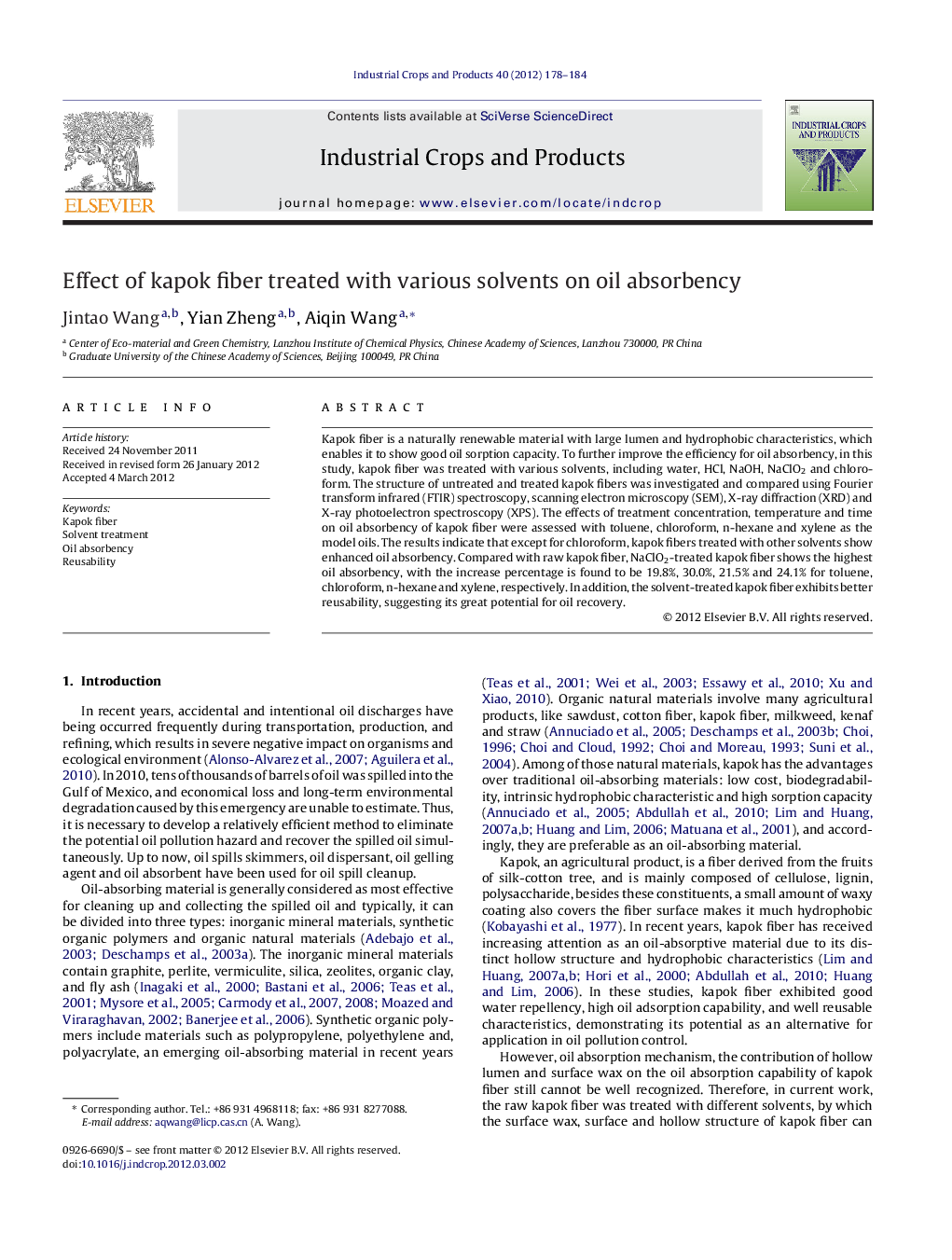| Article ID | Journal | Published Year | Pages | File Type |
|---|---|---|---|---|
| 4513977 | Industrial Crops and Products | 2012 | 7 Pages |
Kapok fiber is a naturally renewable material with large lumen and hydrophobic characteristics, which enables it to show good oil sorption capacity. To further improve the efficiency for oil absorbency, in this study, kapok fiber was treated with various solvents, including water, HCl, NaOH, NaClO2 and chloroform. The structure of untreated and treated kapok fibers was investigated and compared using Fourier transform infrared (FTIR) spectroscopy, scanning electron microscopy (SEM), X-ray diffraction (XRD) and X-ray photoelectron spectroscopy (XPS). The effects of treatment concentration, temperature and time on oil absorbency of kapok fiber were assessed with toluene, chloroform, n-hexane and xylene as the model oils. The results indicate that except for chloroform, kapok fibers treated with other solvents show enhanced oil absorbency. Compared with raw kapok fiber, NaClO2-treated kapok fiber shows the highest oil absorbency, with the increase percentage is found to be 19.8%, 30.0%, 21.5% and 24.1% for toluene, chloroform, n-hexane and xylene, respectively. In addition, the solvent-treated kapok fiber exhibits better reusability, suggesting its great potential for oil recovery.
Graphical abstractFigure optionsDownload full-size imageDownload as PowerPoint slideHighlights► Kapok fiber treated with various solvents can change the oil absorption capability. ► NaClO2-treated kapok fiber shows the highest oil absorbency. ► The removal of waxy on kapok fiber surface can not reduce the oil absorption capacity. ► The variation of surface morphology and crystallinity of kapok fiber is related to its oil absorbency. ► The HCl, NaClO2 and water-treated kapok fiber exhibits better reusability.
